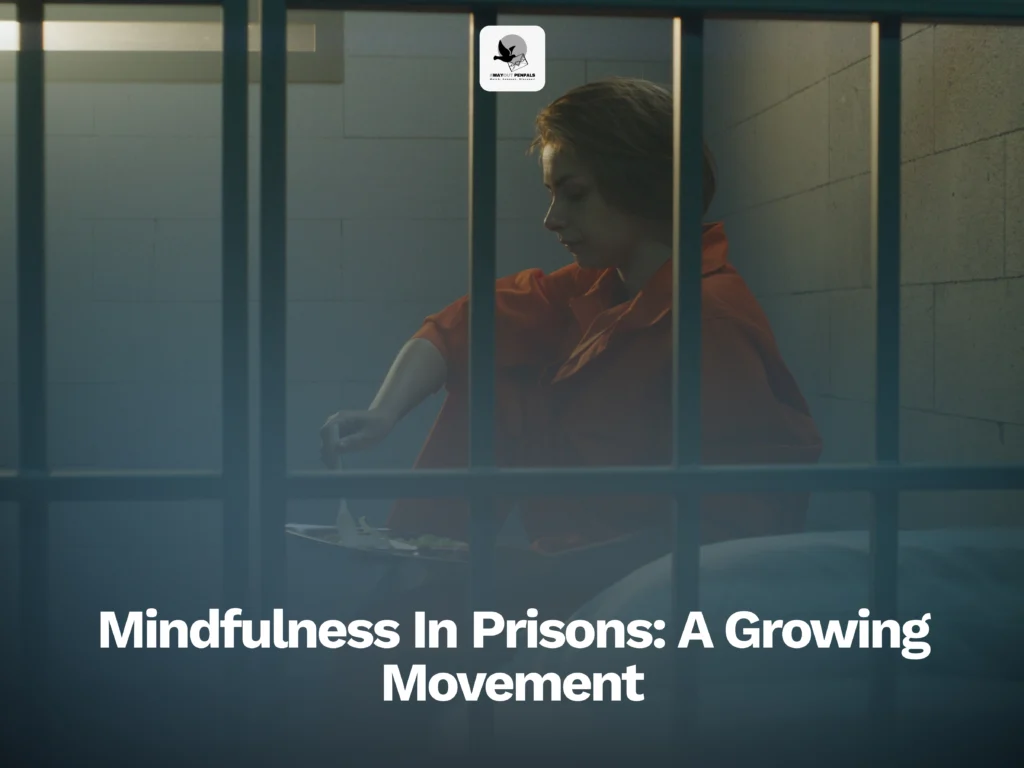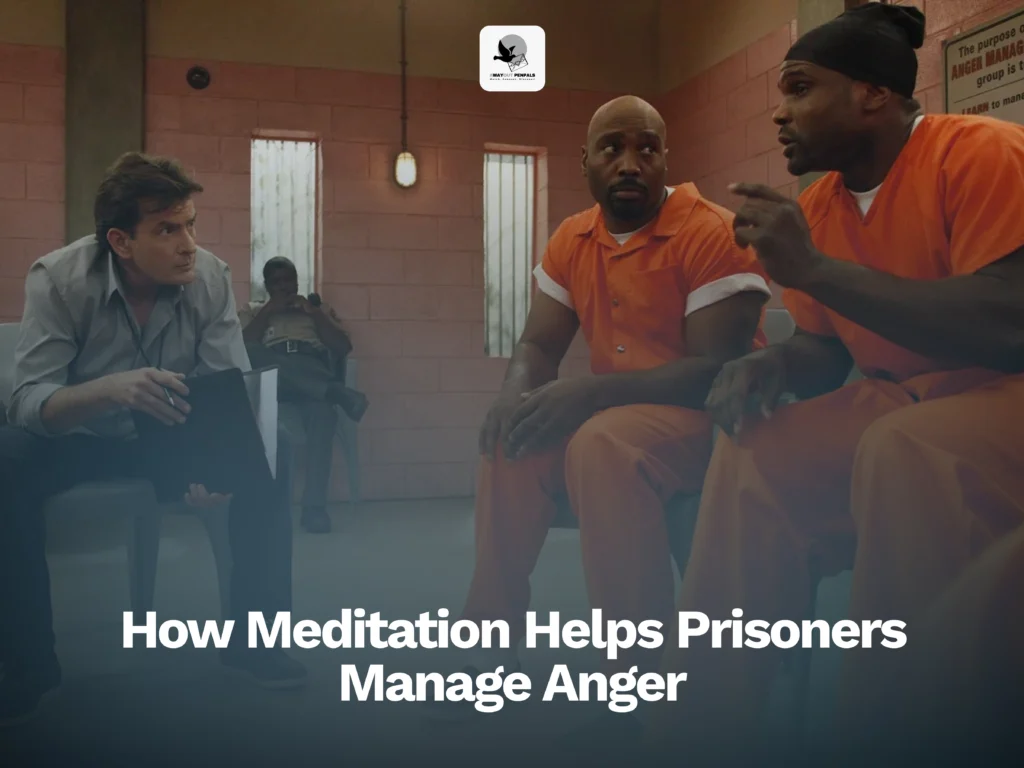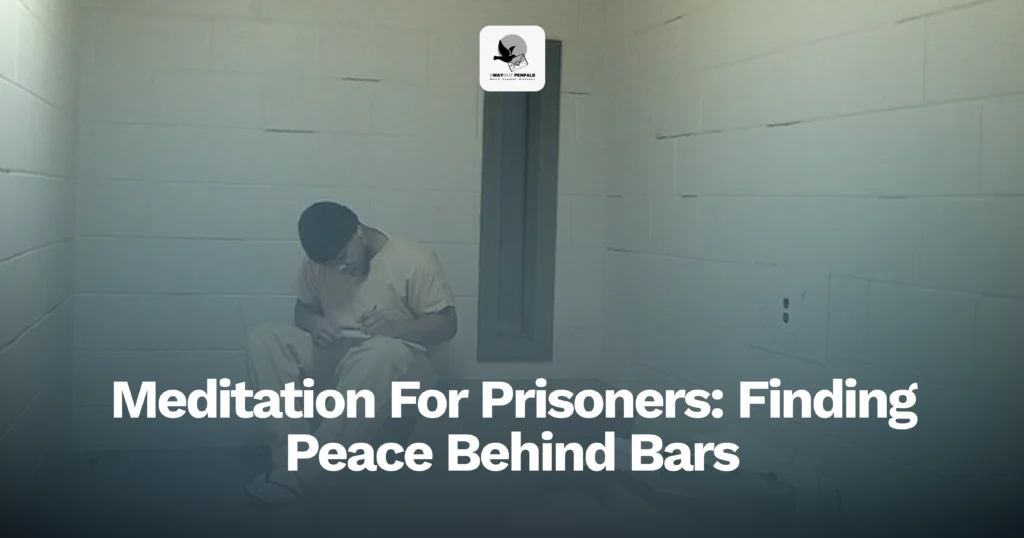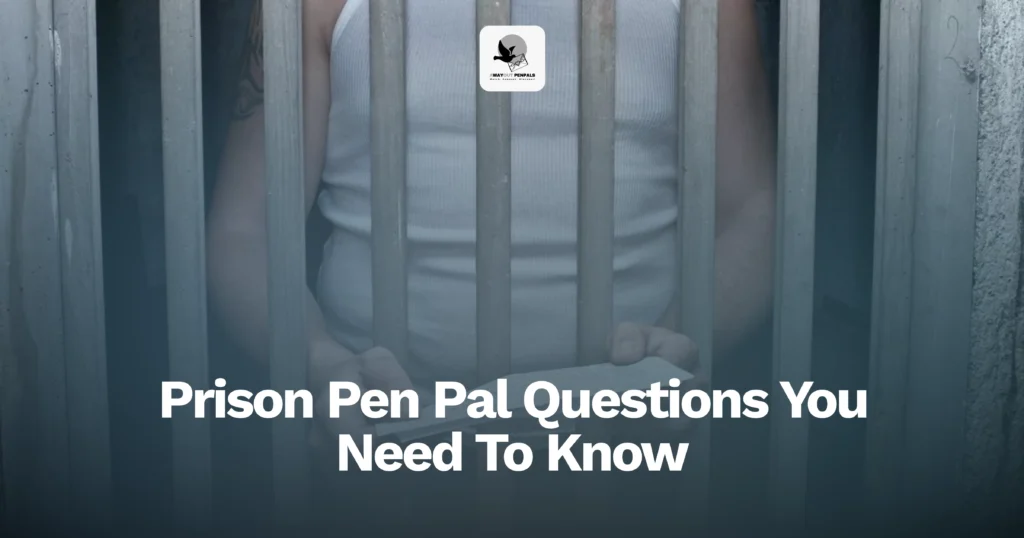What if just sitting quietly for a few minutes each day could help someone in prison feel less angry, sleep better, and feel more in control?
That’s exactly what happened in a study with 1,350 inmates who took part in mindfulness training. They saw big changes, less hostility, better mood, and higher self-esteem.
Another study found that after just a few months of meditation, inmates were sleeping better and experiencing reduced stress and anxiety.
Peace and healing can begin with just one quiet moment.
What if just a few minutes of silence and breathing could bring peace in that kind of chaos?
That’s where prison meditation and mindfulness in prisons come in. More and more jails and prisons are introducing meditation programs to help inmates manage stress, anger, and anxiety.
But how do these programs work nd do they really help?
Why Do Inmates Need Meditation?
More than 40% of people in jail or prison have been diagnosed with a mental health problem. And about 1 in 4 people in jail are going through serious emotional pain right now.
Life behind bars is hard. Most inmates deal with trauma, guilt, mental health issues, or violent pasts. Many struggle with depression, anger or addiction.
If you want to understand more about how incarceration affects mental health, check out our blog on Mental Health in Prison: The Hidden Trauma of Incarceration.
Sadly, the prison system isn’t built to help people heal. But with meditation, healing can begin in that dark, quiet space.
What is Meditation for Prisoners?

Meditation is not just about sitting cross-legged and chanting. It’s simply about breathing, noticing your thoughts and calming your mind.
Meditation allows you to calm your mind through concentration. Because a prisoner’s mind is too scattered, jumping from one thought to another.
Tranquility isn’t easy to find, especially in a jail, but it can be found through meditation. Prisoners who meditate daily receive great benefits from their practice.
Prison meditation teaches inmates how to:
- Breathe deeply and stay calm under pressure
- Notice emotions like anger or sadness without reacting
- Focus on the present moment, not the past or future
It’s simple, free, and powerful. All you need is your breath.
Mindfulness in Prisons: A Growing Movement

Programs like Path of Freedom are teaching mindfulness to inmates across the U.S. This program was created by the Prison Mindfulness Institute and focuses on:
- Emotional intelligence
- Self-awareness
- Forgiveness
- Responsibility
- Meditation practice
Many inmates who join the Path of Freedom say it changes their lives. They start responding to situations with calm, instead of reacting with violence.
Wondering if meditation really works in prisons? This short video explains how mindfulness practices are helping inmates deal with anger, stress, and trauma. It’s a powerful look at how something as simple as sitting quietly can lead to real change, even behind bars.
How Meditation Helps Inmates
So, does meditation for prisoners actually work? Research and real stories say yes.
Here’s what it helps with:
- Less stress and anxiety
- Better sleep and focus
- Lower anger and aggression
- Reduced chances of returning to prison (lower recidivism)
- A sense of self-worth and peace
How Meditation Helps Prisoners Manage Anger

Prison life is stressful, and many inmates struggle with anger and mental health challenges. This video explains how meditation and mindfulness programs help prisoners calm their minds, manage anger better, and reduce stress. It also shows how these practices make prisons safer and support inmates in building healthier habits for life inside and after release.
Watch the video to see how something as simple as meditation is making a big difference behind bars.
Challenges of Meditation in Prison
Of course, it’s not always easy.
Some prisons don’t have the space or support for meditation programs.
Some staff members are unsure or even suspicious of mindfulness.
And not all inmates are open to it at first. But once they try it, many stick with it.
That’s why we need more awareness, volunteers, and support to make programs like Path of Freedom more common in prisons.
How You Can Help
If you’re a nonprofit, volunteer, counselor or even just someone who cares, there are ways you can help bring rehabilitation through mindfulness to prisons.
- Share free resources like “Doing Your Time with Peace of Mind”
- Support programs like Path of Freedom
- Talk to local jails and ask if they offer meditation programs
- Volunteer to lead sessions if you’re trained in mindfulness
Even a few minutes of peace can make a big difference in someone’s life.
Conclusion:
Meditation and mindfulness help many inmates find calm, manage anger and heal from past pain. Programs like Path of Freedom prove that even in prison, people can learn to be more peaceful and hopeful.
If just a few minutes of quiet can make such a big difference for inmates, imagine how much it could help anyone feeling stressed or alone.
If you want to support prisoners on their journey to healing, check out Away Out Pen Pal. It connects people with inmates through letters, bringing hope and friendship to those who need it most.
So why not take a moment today to breathe, be present, and maybe even reach out to someone who could use a friend?
FAQs
1. Is meditation safe for inmates?
Yes. Meditation is safe, easy to learn, and doesn’t require any tools.
2. Do inmates really want to meditate?
Many do! At first, some are unsure. But once they try it, most say it helps them feel better and more in control.
3. How long does it take to see results?
Even after one session, inmates often feel calmer. Long-term practice brings bigger changes.
4. Who teaches these programs?
Some are led by trained volunteers. Others are self-guided using books or workbooks.






